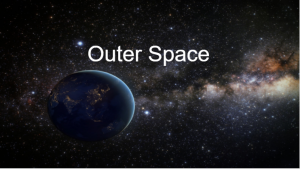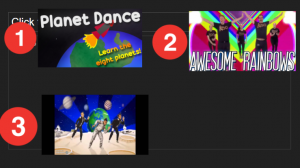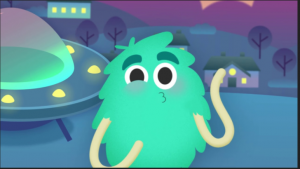Sadly, I’ve spent a lot of time over my career as an educator listening to my inner critic. Recently, I’ve actually put a “face” to my inner critic. My inner critic looks remarkably like the mascot from Montreal’s “Just for Laughs” festival. Ironically, the name given to the mascot by the festival is Victor. In more cases than I care to admit, Victor has been victorious in getting the better of me. Sometimes I can visualize squashing Victor underneath my shoe. Those are good days. Other times I might be able to stuff him into a cupboard. Sometimes he is sitting right on my shoulder and whispering in my ear and won’t go away no matter what I do. All Victor really wants to do is protect me from getting hurt-inner critics do serve a purpose, but he will lie to me in order to get his way. What I am constantly practicing is separating the truth from the lies and stories that I tell myself about a situation before it gets out of hand.
Victor gets particularly loud whenever it has anything to do with my being an educator. My inner critic often compares me to others and makes me feel bad about myself. It might go something like this, “How can you be so weak? Everyone else is handling their job during the pandemic just fine! You cannot ask for help or let others see you sweat. They will think that you are crap at your job and you’ll be fired from teaching altogether. Why can’t you be more like those Super Teacher-of-the-Year Educators on Twitter?” Sometimes I can get lost in the middle of Victor’s storytelling. He can be quite convincing. However, when I am self aware I can pick apart his rationale. “How do you know that everyone else is handling things just fine? I don’t know the story of everyone else. They might be suffering just as much as I am but don’t want to talk about it either. People don’t get fired for having bad days. Asking for help is not weak. Asking for help is brave. Those teachers on Twitter might post their best days and best lessons but still have bad days. What are they even teaching and assessing with this Pinterest project? I am a strong educator and I am doing my best every day, in the middle of a pandemic and sometimes good enough has got to be good enough. There is more to life than my job. Go to your cupboard Victor, you aren’t winning this one.” Sometimes it works like a charm and Victor scurries away. Other times I have to stuff him in the cupboard forcefully. (Disclaimer: No mascots were injured in the writing of this blog). The idea is that I have to be self aware and separate fact from fiction. I have to be very careful with the stories that I tell myself-especially ones that compare me to others. I never have all of the facts about the lives of other people.
I taught grade one for a number of years and my classroom was across the hall from the Kindergarten teacher. I was always in awe of her programming, dedication and energy. In my head, she had it together every single day. I remember thinking, I wish my program was as amazing as hers. I don’t feel like what I do with my students measures up. After many years thinking in this way we chatted about it one afternoon and she admitted that she felt exactly the same way about ME! That discussion was incredibly enlightening to me. I realized that the stories we tell ourselves about others shape how we feel about ourselves. Just like on social media, we put our best selves out there and often don’t let others see our cracks. However, we ALL have cracks. In the words of Leonard Cohen: “Forget your perfect offering. There is a crack, a crack in everything. That’s how the light gets in.” Perfection is a myth, highly overrated and impossible to sustain. We need to treat ourselves gently, with care and compassion. Victor isn’t going to go away anytime soon but I am learning to know when he is lying and I’m calling him on it. “Go to your cupboard, Victor.”













